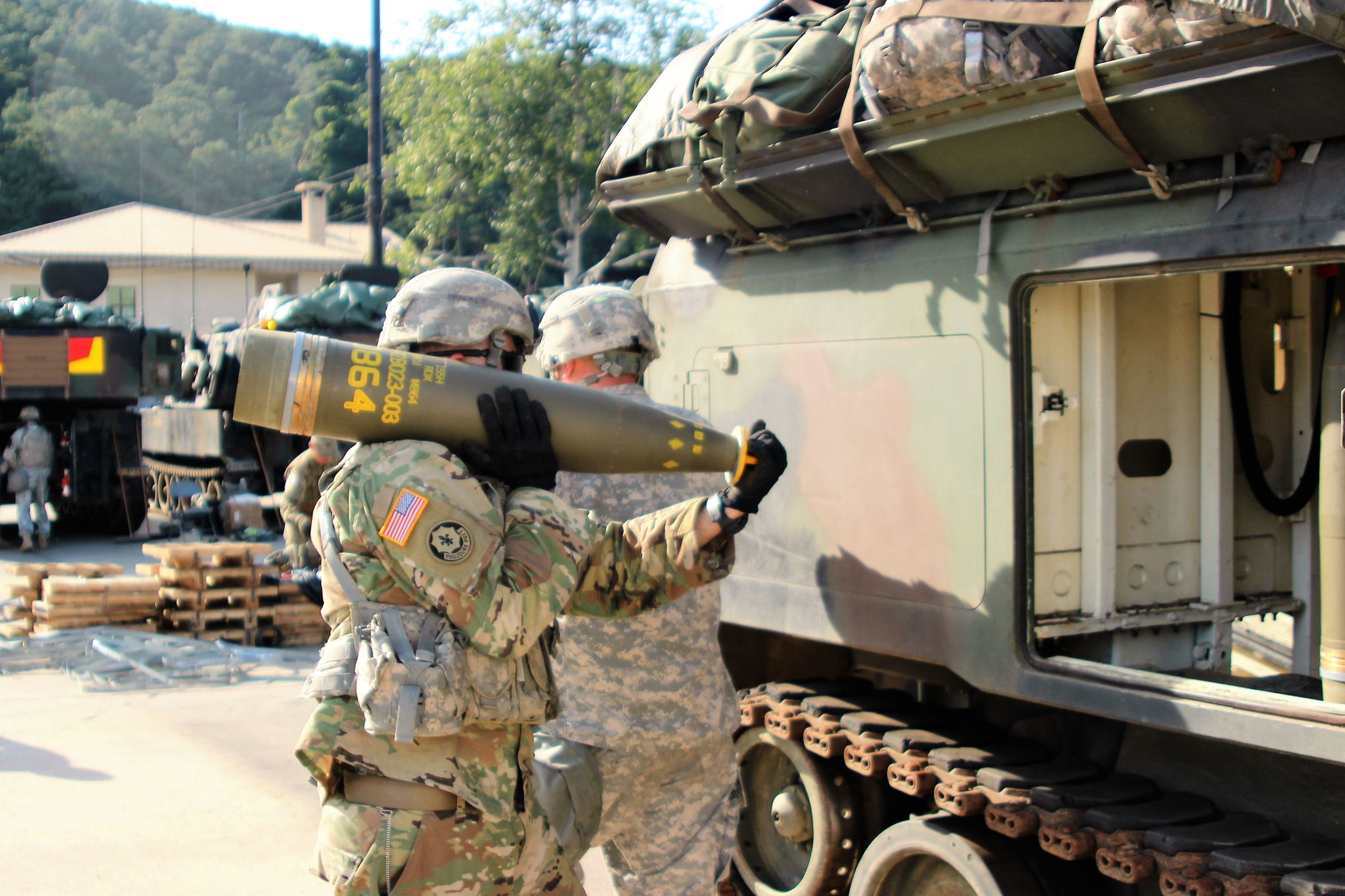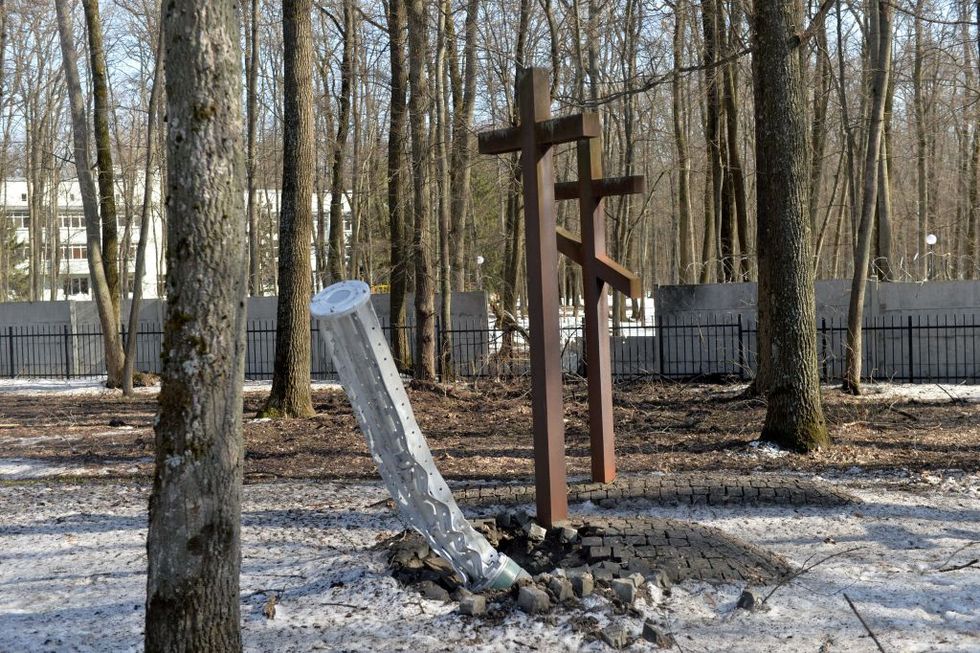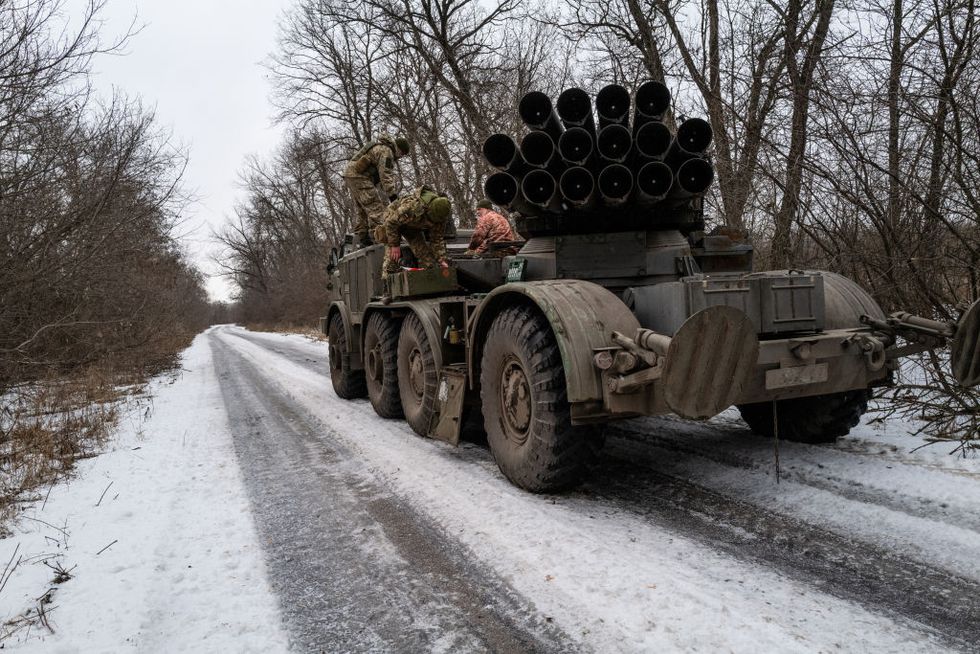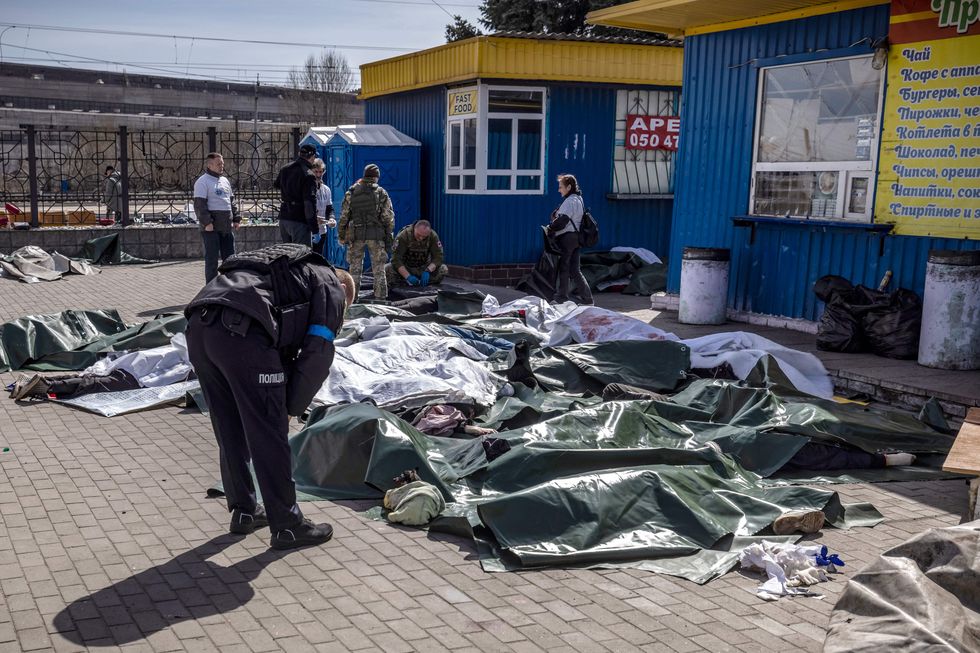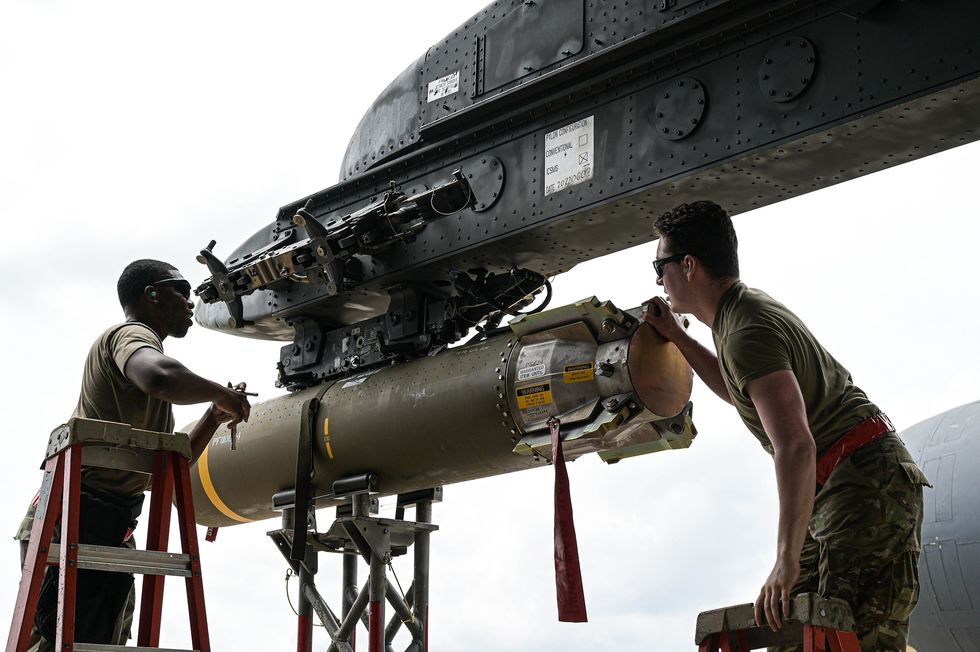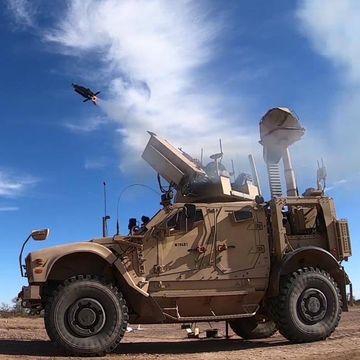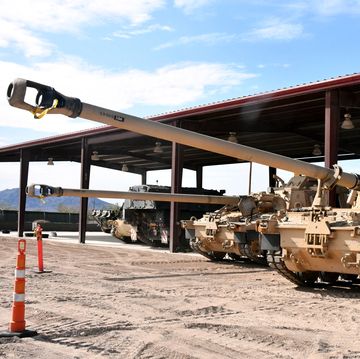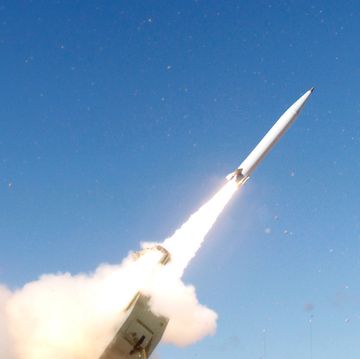White House national security advisor Jake Sullivan announced on Friday afternoon plans to supply Ukraine with cluster munitions—bombs or shells that release a hail of mini-bombs over a large area—as part of an $800 million military aid package, after resisting requests from Ukraine that started back in September 2022. The U.S. will furnish 155-millimeter DPICM artillery rounds from the Pentagon’s own stocks compatible with Ukraine’s diverse inventory of Western-supplied howitzers.
The unspecified quantity will “almost certainly [total] over 100,000 DPICMs” according to Politico’s Paul McLeary.
Other items in the package include Patriot, Stinger and AIM-7 anti-aircraft missiles, 31 155-millimeter howitzers, 32 each Bradley and Stryker armored vehicles (sufficient to equip two battalions), TOW and Javelin anti-tank missiles, 37 tactical recovery vehicles, air-to-surface precision weapons, equipment for sappers, Penguin long-range surveillance drones, and unitary 155 and 105 millimeter artillery shells and HIMARS rockets.
Each cluster round is many times more likely to inflict personnel and vehicle casualties than a similar-caliber conventional artillery round. Sullivan also noted the DPICM rounds help build "a bridge" over a shortage of conventional ammunition supplied to Ukraine until more conventional shells begin pouring out of ammunition factories that have ramped up production.
However, cluster munitions are banned by 112 countries because they leave behind dud bomblets that pose a threat for years to come—essentially unintended land mines that can threaten friendly troops and civilians. Because of their wide area of effect, cluster munitions are also seen as inherently indiscriminate weapons when used in populated areas.
Roughly 99% of global cluster weapon stockpiles have been destroyed.
However, neither Russia, Ukraine, or the United States adhere to the cluster weapon convention. And neither Russia nor Ukraine have held back from employing their existing stocks of cluster munitions in Ukraine. Russia has made extensive use of them since the very first days of its large-scale invasion with attacks hitting the cities of Bucha, Chuhuiv, Kharkiv, Kherson, Kryvyi Rih, Mariupol, Mykolaiv, Okhtyrka, Slavyansk, and Vuhledar among others.
Ukraine has also confirmedly used cluster munitions—though on a more limited scale—with strikes targeting Russian-occupied city Izium, Husarivka and, likely, Donetsk city.
Overall, cluster weapons reportedly killed at least 689 people in the first six month of the war, the “vast majority” non-combatants.
Despite the U.S. not adhering to the ban, the controversies and shortcomings of cluster munitions earlier led the U.S. Army to retire its unguided cluster-munition armed M30 rockets used by its M270 and HIMARS launchers, replaced with precision-guided rockets armed with conventional warheads instead.
While some cluster shells and rockets were converted for training and precision-guided use, an Obama-era policy sought to gradually retire all U.S. cluster weapons with a dud-rate above 1%, leading to many such weapons being decommissioned or converted to other purposes, a move Biden expressed support for in 2006. However, this policy was canceled by the Trump administration.
The remaining stock of 3 million DPICM rounds, however, has gone largely untapped due to the Pentagon’s reluctance to employ these weapons or transfer them abroad. The last extensive operational use by the U.S. military of cluster munitions occurred in Iraq in 2003.
Cluster Munitions, Explained
While some critics of cluster weapons argue that they are of “limited military utility”, that view is often not held by actual operators of these weapons. And reportedly, White House analysts believe that they would be a boost to Ukraine’s military. That said, it’s true that wealthier militaries have been able to phase out use of cluster weapons by relying instead on more expensive precision guided weapons.
The lineage of modern cluster weapons can be traced back to various aerial gravity bombs employed in World War II by Germany, Italy, Russia, and the United States against both battlefield and civilian targets.
The mini-bombs in cluster munition are known as submunitions, bomblets, or grenades. They are released by dispensers built into a larger cargo munition. Each bomblet weighs only a few pounds, and may be designed to fragment for anti-personnel use, to detonate armor-piercing shaped charge warheads for use against vehicles, or carry an incendiary payload designed to start fires. Some exotic submunitions may also be individually guided using infrared sensors. U.S. artillery particularly uses ‘dual-purpose improved conventional munition' cluster rounds (DPICMs) that are effective against personnel, vehicles, and buildings.
The shotgun-spray effect produced by cluster munitions make them extremely lethal against dispersed formations of enemy troops and vehicles, meaning a small number of cluster rounds can achieve an effect that would require a much longer and lengthier bombardment using conventional ‘unitary’ high-explosive munitions.
For example, a study of artillery in the Vietnam War found that it took an average of 13 to 14 regular 155-millimeter howitzer rounds to inflict one casualty, compared to just under two (1.7) improved cluster rounds—making the latter eight times more lethal. Testing also found that cluster munitions were more than an order of magnitude more likely to inflict direct hits on the thin top armor of vehicles. A recent letter by Republicans in Congress urging Biden to release cluster weapons claimed that each DPICM was equivalent to five conventional rounds.
Those qualities explain why Ukraine is pressing for cluster weapons now, as it burns through artillery ammunition attempting to blast its way through entrenched Russian positions in southern and eastern Ukraine. Such weapons, in theory, could greatly increase casualties inflicted, while expending less ammo and reducing own-side losses. They could also prove especially effective at battering enemy forces massing for an attack or counterattack.
However, the fuses in cluster submunitions have often demonstrated a high failure rate—a Red Cross report claims “credible estimates” varied from 10-40% —resulting in huge quantities of the small unexploded submunitions littering the ground and posing an enduring risk to locals, particularly farmers and children who may think that the little bomblets are toys. They also endanger friendly soldiers seeking to capture or move through territory earlier hit by cluster munitions.
Newer cluster munitions have been designed to reduce the dud-rate and/or implement a backup self-destruct system. According to Pentagon Press Secretary Pat Ryder, the U.S. will be “carefully selecting rounds” of DPICM munitions with observed failure rates below 2.35% to give to Ukraine.
Admittedly, the dud rate is known to increase when used against less suitable terrain including forests, mountains with steep slopes, rocky ground, or flooded or snowed-over areas.
An active-duty U.S. Army field artillery officer wrote to me: “All artillery rounds have dud rates, which can increase if used improperly. With modern DPICM, it’s known that the submunitions have a 2-3% dud rate, so everything is taken into consideration such as terrain, buildings etc., to keep that rate as low as possible.”
The rounds being transferred to Ukraine are very likely two types of 155-millimeter cargo rounds compatible with Ukraine’s now large inventory of Western field artillery: the M483A1 and M864 rounds.
The M864 uses base-bleed technology to reduce drag by 50% and thereby achieve a range of 18.6 miles. Each one is packed full with 48 M42 and 24 M46 dual-purpose ‘grenades’ which can individually penetrate up to 70-millimeters of armor. The older M483A1 round has more submunitions (64 M42s and 24 M46s) but a much shorter range of 10.5 miles. The submunitions in both are modified to self-destruct to reduce the dud-rate problem, though the M483A1 historically has a 14% dud rate.
Turkey is already known to have sold M483A1 shells to Ukraine as of November of 2022.
Russia and Ukraine’s Use of Cluster Munitions
Russia and Ukraine have primarily employed cluster bomblets loaded into unguided artillery rockets from 220-millimeter BM-24 Uragan (“Hurricane”) and 300-millimeter BM-30 Smerch systems. Russia also uses the Tornado-S system—primarily intended for deploying cluster munitions using 122-millimeter and larger 300-millimeter rockets.
Russian Iskander and Tochka-U ballistic missiles used by both Russia and Ukraine may also be loaded with up to 54 and 50 fragmentation submunitions, respectively.
The Red Cross confirmed that an attack on Donetsk city left 15 civilians dead and 36 injured. Russian in the area allege that the weapon used for the attack was a Ukrainian Tochka rocket with cluster weapons, but that was not confirmed.
A Ukrainian cluster bombardment of Izium in 2022 also killed eight civilians and wounded over 100.
Most notoriously, on April 8, 2022, a Russian Tochka-U missile showered it payload of 50 bomblets over a train station in downtown Kramatorsk packed full with over 500 civilians seeking to flee, killing 58 and wounding over a hundred.
Both Russia and Ukraine inherited stockpiles of cargo shells for 152-millimeter and 203-millimeter howitzers. Ukraine also has 120-millimeter M971 cluster mortar shells, while Russia maintains stocks of 3-O-8 cluster shells for its massive 240-millimeter 2S4 mortars. The use of those specific munitions in Ukraine has not been fully confirmed, however. Russian warplanes have also dropped RBK-500 cargo bombs loaded with PTAB-1M anti-personnelbomblets.
What Comes Next?
More extensive use of cluster munitions will contribute to risks already posed by countless unexploded shells and land mines buried in Ukrainian soil—munitions that will threaten to randomly kill or injure Ukrainians long after the war is over. Cluster weapon critics argue that the low-dud rates reported for the latest cluster weapons were achieved in laboratory conditions, and that larger dud rates would surely occur when used operationally.
However, Ukraine’s leadership believes that cost is worth paying to improve their odds of liberating territory occupied by Russia and reducing the losses to its soldiers. Advocates argue that Russia is already extensively employing cluster weapons, that the munitions supplied by the U.S. will have a much lower dud rate, and that dud cluster bomblets are already likely to land in areas that will need to be thoroughly cleared of mines and other unexploded munitions anyway.
Journalist Terrell Jermaine noted on social media that people “act like Ukrainians are unaware of the downfalls of cluster munitions... Ukraine has a lot of hard choices to make and none of them are as easy as we want them to be.”
Ukraine’s allies might nonetheless also seek to condition transfer of cluster weapons on assurance that they aren’t employed in populated areas likely to involve heavy collateral damage.
The U.S. supply of cluster weapons, however, also involves political risks of disagreements— particularly with allies like Germany and the United Kingdom that adhere to bans of such munitions (but who supply artillery compatible with their use). These potential political pitfalls will likely be invoked by opponents of U.S. assistance to Ukraine.
Opponents also fear that the U.S. transfer to Ukraine could walk back progress made on curbing the global usage of cluster weapons, resulting in their reintroduction by other parties in more directly problematic ways.
However, having broken the taboo, the White House might consider donating additional types of cluster weapons to Ukraine.
For example, Ukraine has also received at least 72 M119 105-millimeter towed light howitzers. These, in theory, could be armed with old M444 and newer, lower-dud-rate M915 cluster rounds (range 7.1 and 8.7 miles) carrying 18 M39 or 42 M80 bomblets respectively. Ukraine has also apparently sourced U.S.-origin 8’’ shells, presumably for its few Soviet 203-millimeter 2S7 very-long-range howitzers. Thus, Washington could furnish M404 anti-personnel or M509 DPICM with cluster rounds it has in stock. The U.S. no longer operates the M110 howitzers compatible with that ammunition.
Ukraine may also seek cluster payloads for its longer-range M270 and HIMARS rocket launchers with a greater maximum range of 56 miles. Though Ukraine uses these to launch GPS-guided rockets, they were originally built to use unguided M26 rockets carrying either 518 or 644 dual-purpose submunitions. The original M39 model of the long-distance ATACMS missiles Ukraine has sought for those launchers is also armed with cluster warheads.
The U.S. might eventually consider transferring air-dropped cluster weapons for Ukraine to jerry-rig onto Soviet warplanes as well. Indeed, Ukraine has previously requested CBU-100 Rockeye II air-dropped cluster bombs, which were widely used in the Vietnam War. Allegedly, these were requested with the intent to use the 247 Mk.118 ant-tank submunitions in each bomb to arm small drones.
Other allies of Ukraine and Russia not party to the cluster weapon convention might now consider selling or donating them now that Turkey and the U.S. have broken the taboo. Iran or North Korea might sell theirs to Russia. Estonia, Finland, Greece, Latvia, Poland and Romania have all transferred weapons to Ukraine and do not participate in the anti-cluster weapon treaty. The same is true of South Korea, which is effectively transferring shells to Ukraine by backfilling U.S. donations.
Sébastien Roblin has written on the technical, historical, and political aspects of international security and conflict for publications including 19FortyFive, The National Interest, MSNBC, Forbes.com, Inside Unmanned Systems and War is Boring. He holds a Master’s degree from Georgetown University and served with the Peace Corps in China. You can follow his articles on Twitter.
